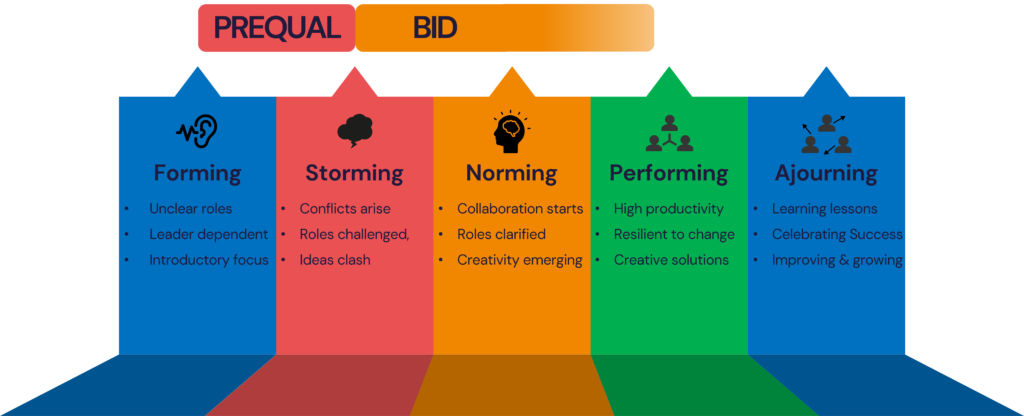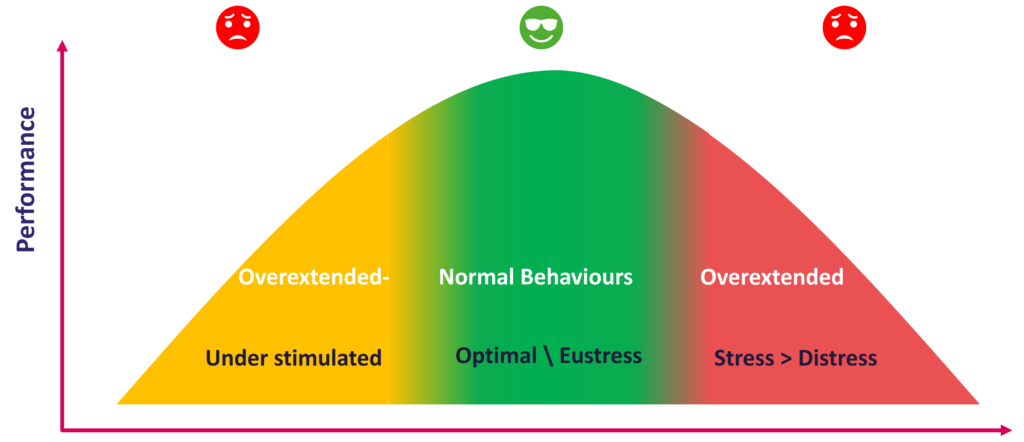The Secrets of Building High-Performing Teams
In a world where the clock is always ticking, whether it’s rescuing trapped miners or securing the next big contract, the ability to create a high-performing team is the difference between triumph and failure. Crisis and bid teams might seem like they exist in separate universes, but their challenges are strikingly similar: tight deadlines, high stakes, and the absolute necessity of collaboration under pressure.
The Parallels Between Crisis and Bid Teams
Take the 2010 Chilean Mine Disaster, for example. Thirty-three miners were trapped 700 metres underground in one of the harshest environments imaginable. Above ground, a team of rescuers—engineers, mining experts, and international specialists—formed almost overnight to tackle the enormous logistical and technical challenges. At the same time, the miners became a team below ground, managing their resources, emotions, and tasks with extraordinary creativity and discipline.

While not working to save lives, bid teams face similarly intense pressure. They must assemble quickly, align on strategy, and produce results within strict deadlines, knowing the outcome can have significant consequences for their organisation. Like crisis teams, bid teams must navigate the journey from Forming to Performing, moving quickly through the stages of Storming and Norming to achieve peak cohesion and performance.

Self-Awareness: The Key to Team Performance
What separates teams that succeed from those that falter? Self-awareness.
Self-awareness enables individuals and teams to understand their strengths, weaknesses, and dynamics. Using tools like Lumina Spark, teams can uncover what drives each member, helping to align roles and reduce friction. For example, some people thrive on structure and data (Blue and Green traits), while others bring energy and big-picture thinking (Red and Yellow traits). When these differences are embraced, creativity flourishes, and conflict diminishes.
In bid teams, this self-awareness can be the difference between endless arguments over direction (Storming) and a unified strategy that drives results (Performing). It’s not just about knowing who is good at what—it’s about creating an environment where every team member feels understood, valued, and empowered to contribute.
The Role of Stress and Creativity
The best teams don’t just survive under pressure—they thrive. This balance is explained by the Yerkes-Dodson Curve, which shows how performance increases with stress up to an optimal point. Too little stress and the team lacks urgency. Too much, and creativity and productivity collapse under the weight.

Miners and rescuers operated in this optimal stress zone in the Chilean mine rescue. The rescuers coordinated international efforts precisely, while the miners rationed supplies and maintained morale through ingenuity and discipline. For bid teams, the challenge is to manage stress levels effectively—fostering creativity while maintaining focus under tight deadlines.
Trust: The Foundation of Success
No team can reach its full potential without trust. This is where Lencioni’s Five Dysfunctions of a Team come into play:
- Absence of Trust: Without trust, teams fail to collaborate effectively.
- Fear of Conflict: Avoiding difficult conversations leads to stagnation.
- Lack of Commitment: Unresolved issues erode buy-in and focus.
- Avoidance of Accountability: Teams fall into finger-pointing and inefficiency.
- Inattention to Results: Success becomes secondary to individual agendas.
Trust enables teams to confront challenges head-on in high-pressure environments, fostering open dialogue and shared accountability. For bid teams, this means having the confidence to engage in constructive conflict, commit to a shared vision, and focus relentlessly on delivering winning proposals.
A Framework for High-Performing Teams
To help teams accelerate to the Performing stage, here’s a practical framework:
- Diagnose the Team’s Stage: Use tools like Enable’s Team performance questionnaire to identify whether the team is Forming, Storming, or Norming.
- Build Self-Awareness: Leverage psychometric tools like Lumina Spark to understand team dynamics and effectively align roles.
- Manage Stress Levels: Use the Yerkes-Dodson Curve as a guide to keep pressure in the optimal range for performance and creativity.
- Learn from Experience: Conduct lessons learned reviews to assess what worked, what didn’t, and how to improve for the next bid, but only in a climate of openness, reflection and desire to improve.
The Big Takeaway
What sets high-performing teams apart is their ability to combine cohesion with creativity, even under immense pressure. Whether rescuing miners or winning contracts, success depends on how quickly and effectively a team can align around a shared goal. By building trust, embracing self-awareness, and managing stress, you can give your team the edge to thrive, not just survive.
Are you ready to dig deeper and uncover your team’s true potential? With the right tools and frameworks, it’s time to unearth the brilliance that lies beneath. Enable will give you that competitive edge.
